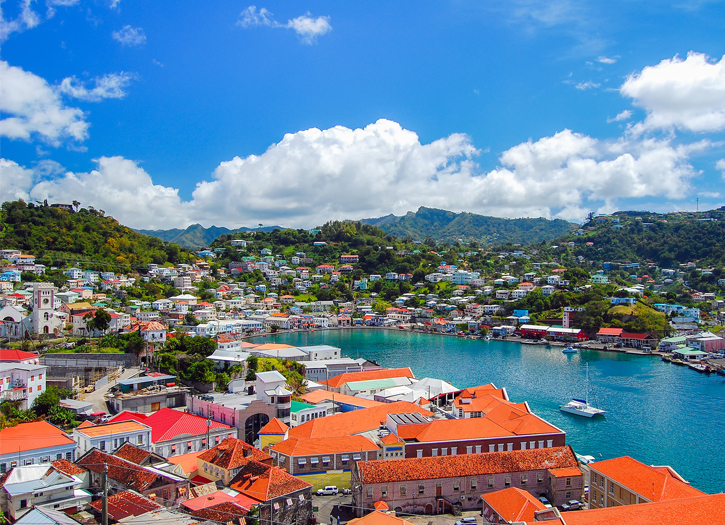The COVID-19 pandemic in Grenada is part of the ongoing global viral pandemic of coronavirus disease 2019 (COVID-19), which was confirmed to have reached Grenada on March 22, 2020. Despite lockdowns and social distancing protocols, it appeared to have reached the level of community spread within one month. However, cases continued to decline through May, the Ministry of Health declared zero active cases.
The case fatality ratio for COVID-19 has been much lower than SARS of 2003, but the transmission has been significantly greater, with a significant total death toll. Like most countries, Grenada had increased screening at the airport in early February and begun sending test samples to CARPHA. At 12am on March 23, the airport was closed to commercial passenger traffic indefinitely, and on June 28 it was announced to remain closed until at least the end of July.
March 28—Two more cases announced (2 female, ages 50–80), one sat nearby Patient Zero on the March 16 flight; another had relatives visiting from New York City, arrived March 17. The one who sat near Patient Zero on the March 16 flight was a 50-year-old male who became symptomatic on March 26, was tested in Grenada and told to self-quarantine while awaiting the results. March 29—Government announces 24-hour curfew for one week. As on 19 September, Grenada was Covid free. Total number of cases was 24, all of them recovered.
The government of Prime minister Keith Mitchell instituted a series of increasingly tightening social distancing and quarantine policies that eventually led to a full country lockdown. Prior to the island’s first case (but in anticipation of it occurring), schools and public gatherings were banned and social distancing encouraged on March 14. On March 25, emergency powers were implemented to restrict movement and nightly curfews. Businesses unable to enforce social distancing were ordered to be closed. These were quickly revised into a full, 24-hour lockdown on March 30, where all citizens were to remain in their homes and all business were closed except essential services described in the act.
With no new cases in the first week of May, Prime Minister Keith Mitchell announced a relaxation of the 24-hour curfew rules, with pre-approved businesses (e.g., grocery stores, banks, etc.) allowed to open every day again, beginning May 11, albeit with continued maintenance of a curfew from 7pm to 5pm. Among other things, construction projects and landscaping could also restart, as could travel between the sister islands, although international borders would remain closed until early June. Nonetheless, the ban on public buses remained in effect, limiting access to those who owned private vehicles, and restaurants remained take-out only.
As with the rest of the world, the Coronavirus pandemic wreaked havoc on Grenada’s economy, least not the ripple effects of a collapsed tourism industry. On March 20, 2020, the government announced a stimulus package to provide income support to small businesses, suspension of various taxes, and unemployment benefits to eligible citizens, which took about a month to fully roll out. Seven sub-committees have also been set up to focus on the needs of tourism & citizen by investment, construction, education, small businesses, agriculture and fisheries, manufacturing, and e-commerce.To help meet the short-falls, Grenada a received rapid loan of US$22.4 million from the IMF, in a package aimed at the Eastern Caribbean countries of Dominica, Grenada, and St. Lucia, more than doubling the previous US$14.38 million Grenada owed to the lender. Another loan of $5.9 million was secured through the Caribbean Development Bank.
On March 22, Grenada’s international airport and Carriacou’s regional airport were closed to all commercial passenger traffic, and remained so through the 2020 summer. With the stoppage of passenger flights, courier mail services. On May 29, it was announced that June 30 was the anticipated opening of the borders (and thus, airports), with the expectation that all incoming passengers would receive a temperature check, rapid antibody test, and would self-quarantine for 14 days after arrival.Public bus transport was allowed to recommence on June 1, but with reduced passenger loads (12 people max, including driver and conductor—later increased to 15).







Add Comment
You must be logged in to post a comment.